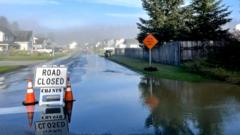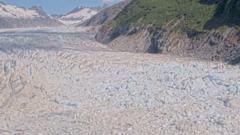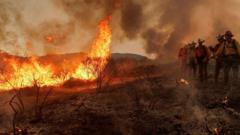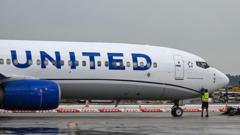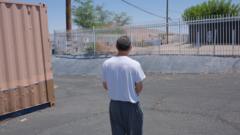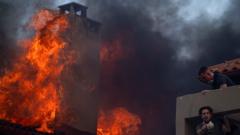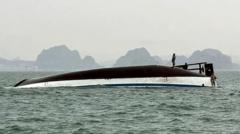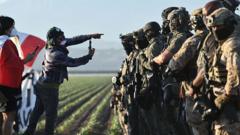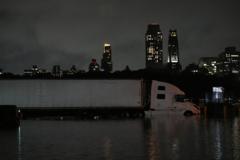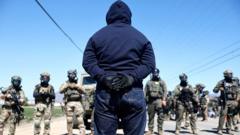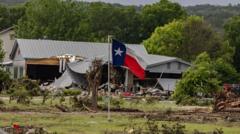A potent arctic outbreak brings bitter cold, heavy snow, and rain, impacting millions traveling for the holiday.
**Thanksgiving Travel Disrupted by Arctic Weather Conditions Across the U.S.**
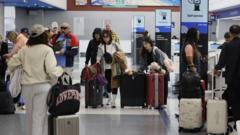
**Thanksgiving Travel Disrupted by Arctic Weather Conditions Across the U.S.**
Millions preparing for Thanksgiving face significant travel challenges due to severe winter weather expected across the eastern U.S.
As millions of Americans make their way for the Thanksgiving holiday across the nation, a heavy wave of arctic weather is set to disrupt travel plans for many. According to the National Weather Service (NWS), an "arctic outbreak" is predicted to sweep over the northern Plains, coinciding with one of the busiest travel periods of the year.
Heavy snowfall is anticipated over the Colorado Rockies on Wednesday, kicking off a severe weather system that will intensify as it moves eastward on Thanksgiving Day. Some regions may see accumulations of over 10 inches (25 cm) of snow. Meanwhile, temperatures in some areas could plunge to dangerously low levels, dropping as low as -30F to -40F (-34C to -40C), particularly in the northern Plains and Upper Midwest, as noted by BBC Weather forecaster Matt Taylor.
As the storm progresses, locations in the Midwest may also experience "lake-effect" snow and fierce thunderstorms. New England and the Appalachian region are expected to see significant snowfall, while parts of the Great Lakes region could receive between 4-8 inches of snow, with areas along the northern coastline of Michigan particularly affected.
The travel fiasco aligns with previously forecasted record-high passenger volumes. The U.S. Transportation Security Administration (TSA) anticipates that nearly nine million people will be screened at airports during the peak travel days of the Tuesday and Wednesday leading up to Thanksgiving, as well as the following Sunday. In addition, insurance reports indicate that around 72 million Americans are expected to embark on car journeys of at least 50 miles (80 km) during this time, bolstered by lower fuel prices compared to last year.
So far, airport operations have remained largely unaffected, although officials warn that disruptions could arise as severe conditions move into the region. Major highways, such as the I-90 corridor between Cleveland and Buffalo and the I-81 route north of Syracuse, are expected to face delays due to increasing snowfall.
In the West, California continues to deal with the aftermath of a winter storm that caused heavy snowfall in higher elevations earlier this week alongside strong winds. An "atmospheric river" event has already made its mark, with another low pressure system threatening further coastal rain across areas of Washington, Oregon, and California. As millions traverse the nation for Thanksgiving, many face the daunting combination of heavy snow and chilly temperatures.
Heavy snowfall is anticipated over the Colorado Rockies on Wednesday, kicking off a severe weather system that will intensify as it moves eastward on Thanksgiving Day. Some regions may see accumulations of over 10 inches (25 cm) of snow. Meanwhile, temperatures in some areas could plunge to dangerously low levels, dropping as low as -30F to -40F (-34C to -40C), particularly in the northern Plains and Upper Midwest, as noted by BBC Weather forecaster Matt Taylor.
As the storm progresses, locations in the Midwest may also experience "lake-effect" snow and fierce thunderstorms. New England and the Appalachian region are expected to see significant snowfall, while parts of the Great Lakes region could receive between 4-8 inches of snow, with areas along the northern coastline of Michigan particularly affected.
The travel fiasco aligns with previously forecasted record-high passenger volumes. The U.S. Transportation Security Administration (TSA) anticipates that nearly nine million people will be screened at airports during the peak travel days of the Tuesday and Wednesday leading up to Thanksgiving, as well as the following Sunday. In addition, insurance reports indicate that around 72 million Americans are expected to embark on car journeys of at least 50 miles (80 km) during this time, bolstered by lower fuel prices compared to last year.
So far, airport operations have remained largely unaffected, although officials warn that disruptions could arise as severe conditions move into the region. Major highways, such as the I-90 corridor between Cleveland and Buffalo and the I-81 route north of Syracuse, are expected to face delays due to increasing snowfall.
In the West, California continues to deal with the aftermath of a winter storm that caused heavy snowfall in higher elevations earlier this week alongside strong winds. An "atmospheric river" event has already made its mark, with another low pressure system threatening further coastal rain across areas of Washington, Oregon, and California. As millions traverse the nation for Thanksgiving, many face the daunting combination of heavy snow and chilly temperatures.

